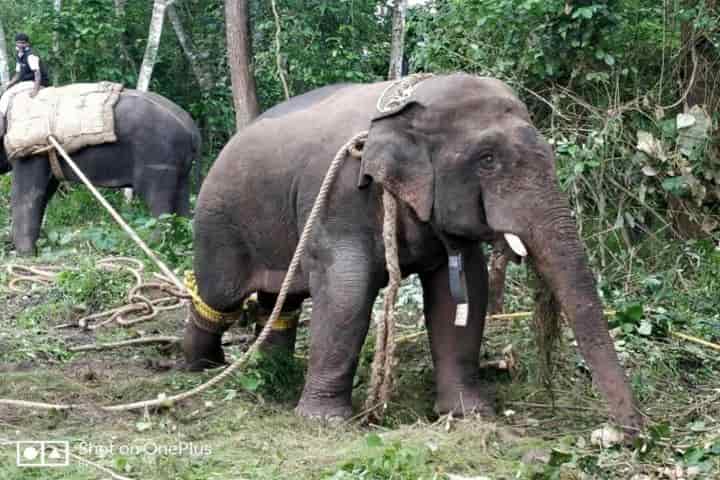When it became public that the Karnataka Forest Department had moved the Mountain to a different location, it confused many! Well, Mountain is the name of a 20-year-old tusker who was captured from Sakleshpur in Karnataka by the brave KFD officials and relocated to Cauvery Wildlife Sanctuary, from where he played truant and went his way!
The elephant was recaptured on June 28, this time from Channapatna, which is close to a place inhabited by people.
It is not without reason that Mountain was recaptured. He had decided to throw caution to winds, and get out of CWS as he was trying to find his way back home, Sakleshpur, from where he was first captured.
Remarkably, the four-legged animal, Mountain, had travelled nearly 100 kilometres. He had trekked like a seasoned traveller through Cauvery river, then crossed Sangam. Following which he reached Kokkrebellur bird sanctuary and from there moved to Mysuru Road State Highway to Channapatna.
In order to move the Mountain, the Forest Department staff used a crane to hoist the captured elephant into a lorry in Avverehalli village.
Sharing details about this adventure of Mountain, forest officials told the New Indian Express: “Earlier, when Mountain started to move out of CWS, it was brought back inside. However, when it crossed to the other side of Cauvery river, an alert was sounded. A special team of around 60 were deployed to keep a close watch on him. No conflict with humans were reported as he travelled only during the night and alerts were sounded. He walked through all the green pastures but the problem arose when he crossed the highway twice and the area was new to him. The lockdown and curfew helped in ensuring that there was no conflict.”
Providing more information, Vijay Kumar Gogi, the Principal Chief Conservator of Forests (Wildlife) told NIE, “Usually, tuskers wander inside forest areas, but this one moved too close to human habitation. The radio collar helped keep track of his movements.”
Why was the tusker named Mountain?
It is not without reason that the Forest Department patrolling team in the State name these jumbos. It helps not only in tracking and watching them but also the names come handy when alerts need to be issued.
When two elephants were caught from Sakleshpur region in the State, their rescue and rehabilitation process caught the eye of a number of conservationists. Why? Because the patrol teams referring to the capture of the two elephants said that Mountain and Gundu were caught.
Mountain and Gunda were rescued in a coffee plantation at Halekere. Talking about their capture, the Deputy Conservator of Forests, K.N. Basavaraj said that it was the first time the Department had captured two elephants on a single day.
While some objected to the naming of these troubleshooting tuskers, there were others who defended the staffers doing so as it helped them greatly in easy identification for capture or to keep track of them and watch them.
Besides, it is very useful while sending SMS alerts to other staffers to track and check the movement of the herds.
The forest officials of the Hassan division who captured the two notorious tuskers last week explained why and how they name the elephants. A senior official told NIE: “The 20-year-old tusker was called Mountain not due to his size but because of the location where he was sighted, which was near a mountain in the region. The other 30-year-old was named “Gunda” which means round and not “Goonda” or rogue. The ground patrolling team and watchers name these tuskers based on their looks, the location of their sighting or places where a death has been reported. This practise is done for easy identification, communication and even to capture them.”
Other names
Besides the two tuskers, they also christened three radio-collared matriarch herd heads. The tuskers, were named Old Belt, Beetamma and Bhuvaneshwari were radio collared in January this year.
“So instead of saying, a herd led by radio collared on (particular date and number) is moving, for quick communication we call Old Belt is moving to the waterbed. Since her herd details are already known, communication is quick and action is swifter,” observed the official.
Another set of three tuskers in the division have been identified as Karadi (because of its colour), Bheema (because of the size) and Chota Bheem (owing to its smaller size and named after the famous cartoon character).
In the past, old camp tuskers were named Abhimanyu, Bheema, and Arjun on characters from the epic Mahabharata. These animals who were with the State Forest Department for a long time, had attained a cult status among the photographers, conservationists and foresters.




















